From the outside, it looks like a dream life. Rugged mountains, sweeping canyons, the road ahead – all framed through the open back doors of an achingly hip camper van, replete with artfully arranged fairy lights, cozy blankets, and, at the center, a super attractive millennial couple.
This is #vanlife, an Instagram aesthetic that, according to those who subscribe to it, is apparently more of a movement. There are more than five million posts tagged with the hashtag and counting, with popular Van Lifers racking up thousands of followers with their dreamy dispatches from the road.
But what’s it really like to travel across country in a very cool – but still, by its very nature, very tiny and restrictive – vehicle?
And what’s it like when not just your lifestyle, but your relationship, becomes commodified?
The answer? More complicated than you might think.
Alternative lifestyle
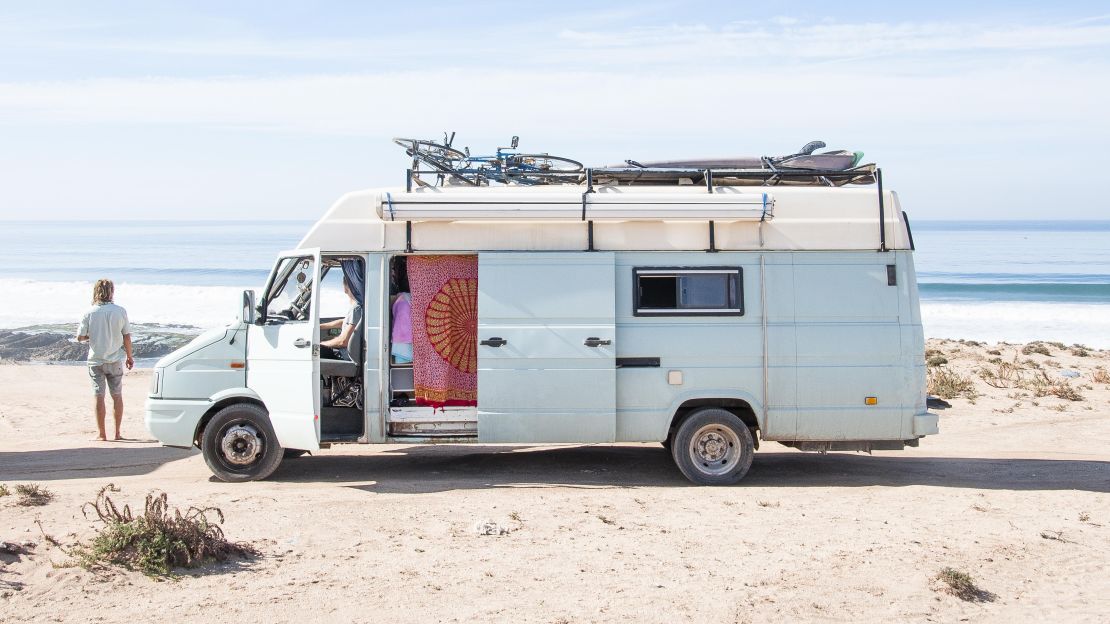
For Texan Lisa Jacobs, 33, a watershed moment in her personal life led her to pack in her job as a lawyer and pack up her things into a van.
“I’d started going down that path of getting a home and getting a partner – and all these things that I thought were supposed to make me happy,” she tells CNN Travel. “And I was not happy.”
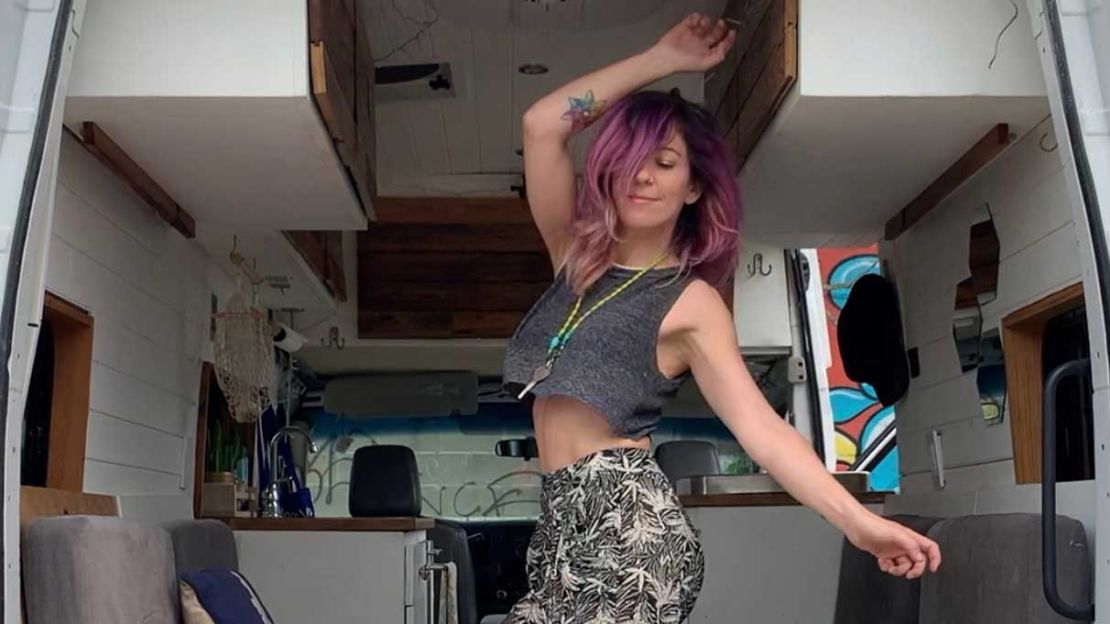
When her mother was diagnosed with breast cancer and passed away shortly after, Jacobs experienced a gargantuan shift in her priorities.
“All the things that I was worrying about – all the job, work deadlines, and things that I’d said, things that embarrassed me or what other people thought, I just realized that nothing matters, because our time here is so, so short.
“And that propelled me into rejecting a lot of the things I had embraced previously.”
Jacobs discovered the great outdoors via her cell phone.
Stumbling upon the Van Life community on Instagram, she was swept away by its allure.
She stayed up all night researching. The next day, she bought her van on Craigslist – a Nissan ND 2500.
Lisa’s Instagram account, @vacayvans, is something of an anomaly in the Van Life world.
Sure, there’s still a lot of millennial wish fulfillment: she does yoga – in fact, she’s about to head to Bali to solidify her status as a yoga instructor – she’s got a lot of house (van?) plants and brightly colored throws that match her shock of bright pink hair.
The key difference? She documents her life as a solo female traveler.
The Van Life Instagram community has a very specific aesthetic: athletic, long-limbed, white, blonde couples offering an Urban Outfitters-tinted view of the great outdoors.
Lisa’s journey didn’t start off solo, she explains. When she first plotted her life off the grid, she had a long-term boyfriend in tow.
“We had been sharing our big plans to live this beautiful life together as a Van Life couple. And then two weeks in, we break up,” she says.
“It was not the ideal ‘Instagram Van Life Couple’ that I thought I was part of.”
Van Life couples
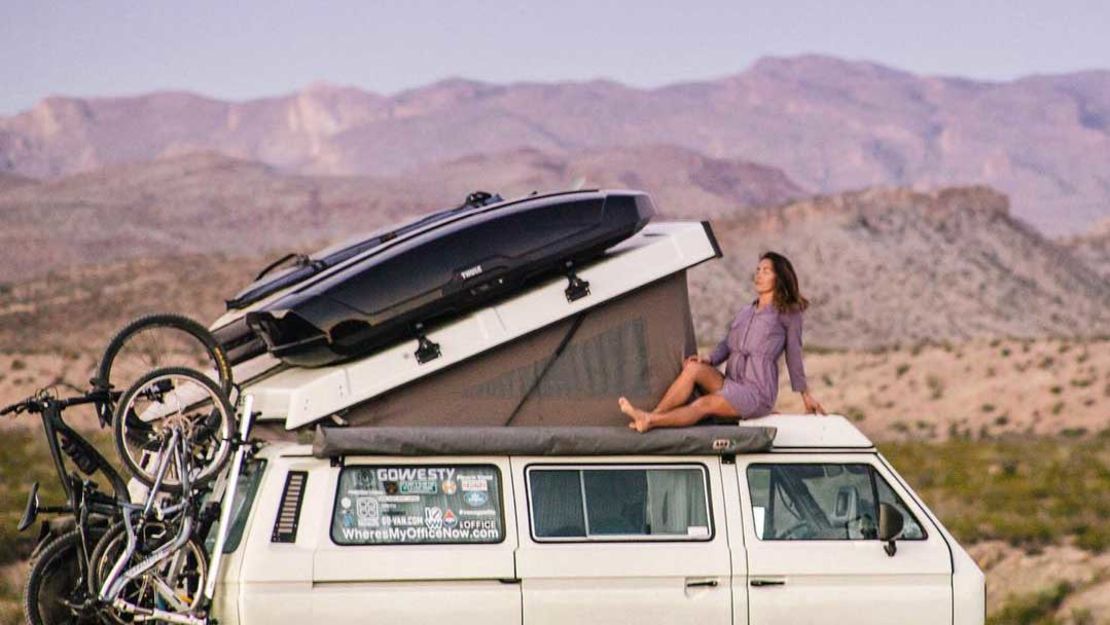
So what is the “ideal” Van Life couple?
Maybe thirty-somethings Emily King and Corey Smith, the couple behind @wheresmyofficenow, a picture-perfect Instagram account documenting their adventures in their second-hand 1987 Vanagon Camper.
There are shots of a bikini-clad King making coconut and almond pancakes, a basket of limes and fruits hanging behind her and two gorgeous dogs lounging to her right.
In another snap, the couple parks for the night in Baja California, Mexico, ready for a barbecue with friends, the sun setting in the distance. Further down the grid, King’s sitting on top of the van in Texas, purple-hued mountains and skies behind her.
It’s not hard to get a bit lost in the perfection.
Corey Smith says he graduated around the time of the 2008 recession. Like former lawyer Jacobs, he felt a disconnect between what he’d been promised adult life would be like, and what it actually was like.
“If you’re willing to take the risk to make your own path, you have the ability to do some pretty sweet stuff,” he tells CNN Travel.
The couple purchased their van in 2012 and, as they crisscrossed all over North America, their Instagram account grew and grew.
Now, Smith says #VanLife is “extremely saturated.” It’s hard to make your posts unique, he says.
The photographs under the hashtag are alluring and artsy, but all very similar.
They’re “van porn,” as Smith calls it.
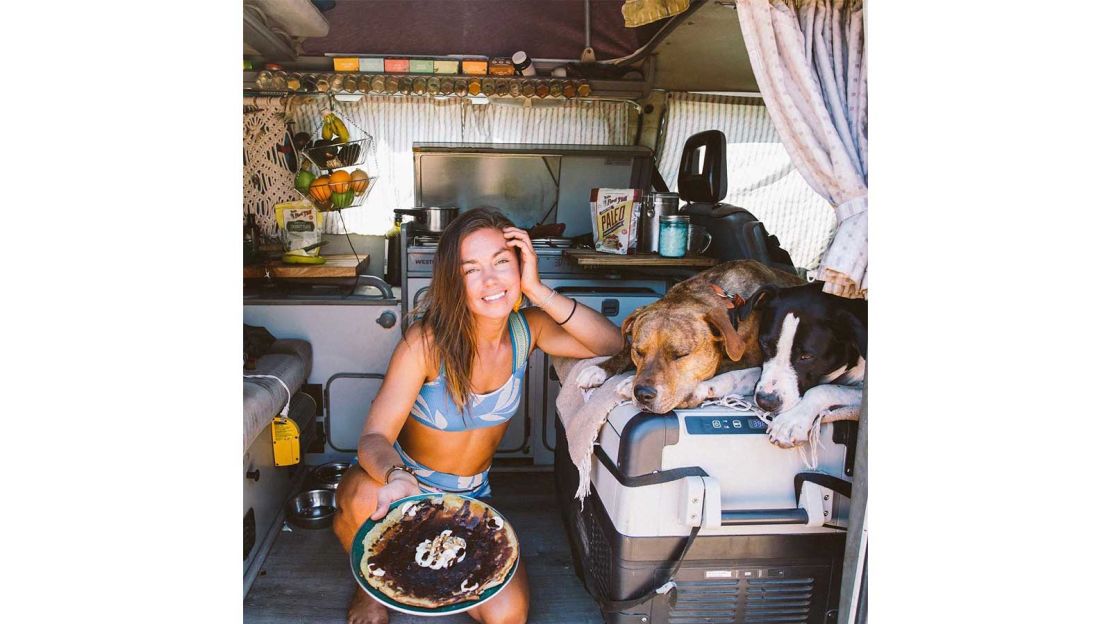
He adds that he was initially very skeptical about social media, concerned that the couple’s experiences would be taken over by the need to create content for their followers.
“And I would say to some degree, that’s come true,” he admits.
“But we don’t drive places to take pictures. The pictures happen naturally, as we go about our day. If I want Emily to stand a certain way, I might ask her to do something again, but I don’t pick a point on a map or go a certain place to get a picture.”
Smith knows they play into the “over-glorification” of the van lifestyle. More recently the couple has tried to break away from some of the Van Life cliches.
“There’s a lot of moments that are in between that aren’t as glorious, but I think as important to share,” he says.
Van Lifer Alexandra Ulmke, @agirlandhervan on Instagram, who started off blogging about her life as a solo female traveler but is now in a long-term relationship, said she definitely experienced some difficulties with the expectation versus reality.
“Loneliness was a huge issue for me,” she says. It was a journey, she says, to embrace solitude, and find comfort in it.
She describes her first few years on the road as “wanting a revelation, and not getting it.”
It’s not just her relationship that’s led her to her present-day happiness. She says it was learning what Van Life truly meant: embracing the outdoors and all it has to offer, and learning to be candid online.
International movement
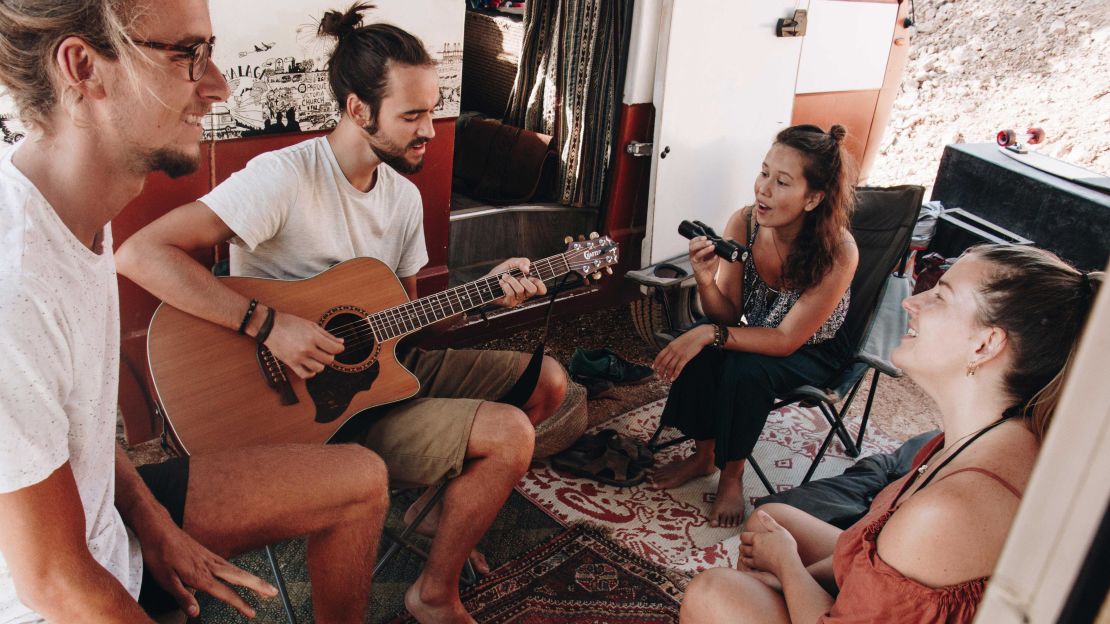
Across the pond in the UK, Van Lifers Calum Creasey and Lauren Smith based in Cornwall, are the British epitome of Van Life #couplegoals.
Whereas American Van Life Instagram accounts tend to be bikinis and sandy beaches, mountains and tans, Creasey and Smith’s account @therollinghome is a bit more “hygge” in its vibe.
All the images are bathed in a soft old-school-film-camera glow, whether it’s Smith captured cleaning her teeth on a clifftop or their converted Volkswagen T4 van parked up by the ocean on a blustery seaside day.
It’s still wish fulfillment, just of a different sort.
The couple, now turning 30, have been together since they were 18, known one another since they were 12 – and Van Life’s been intertwined with their romance from the beginning
Creasey tells CNN Travel he remembers driving around to Lauren’s parents’ house and showing her the first van he’d converted.
The duo, who’d always documented their adventures, fell into the Instagram community somewhat accidentally.
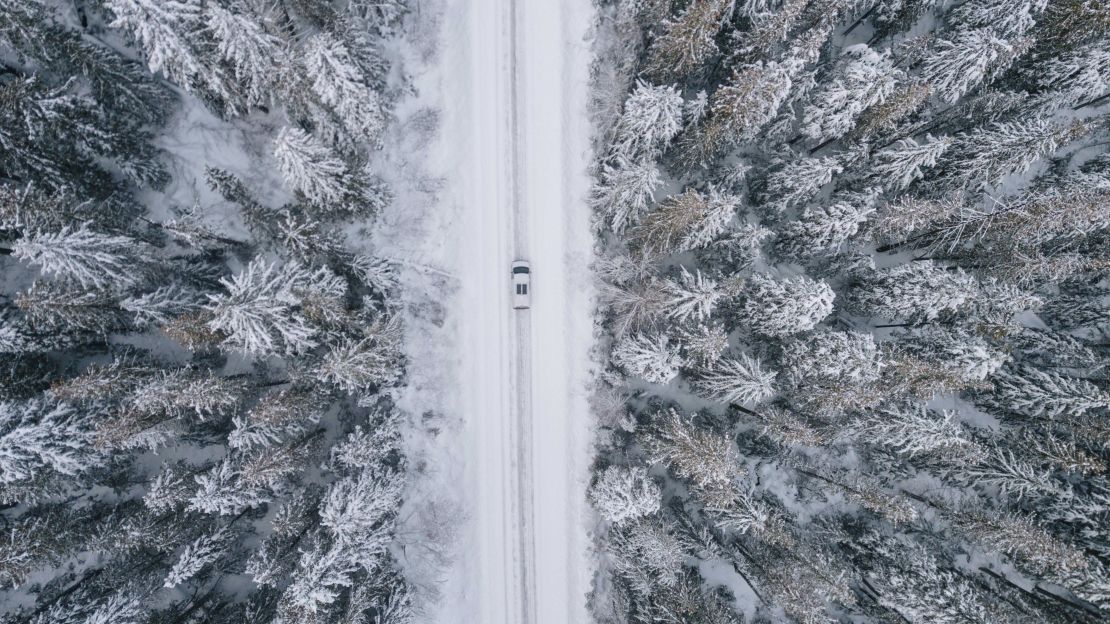
“I guess there was a point where we kind of realized that our van and our travels and all of the photos that we had were really powerful,” says Creasey. “People really resonated with them.”
“Not necessarily because of us as people, but more the situations, the environment that the van will be in. They really evoke a deep feeling in people when they see them.”
It’s the excitement, trepidation, the promise of simplicity, of escapism.
The couple have made vans their life and work, even though they no longer live full time in their Volkswagen.
They crowd-funded their first book, started a quarterly journal and recently put together a new book, “The Culture of Vanlife” published by Lannoo and showcasing their photographs and stories, alongside other Van Lifers’ anecdotes, interviews and snapshots.
Sustainability question
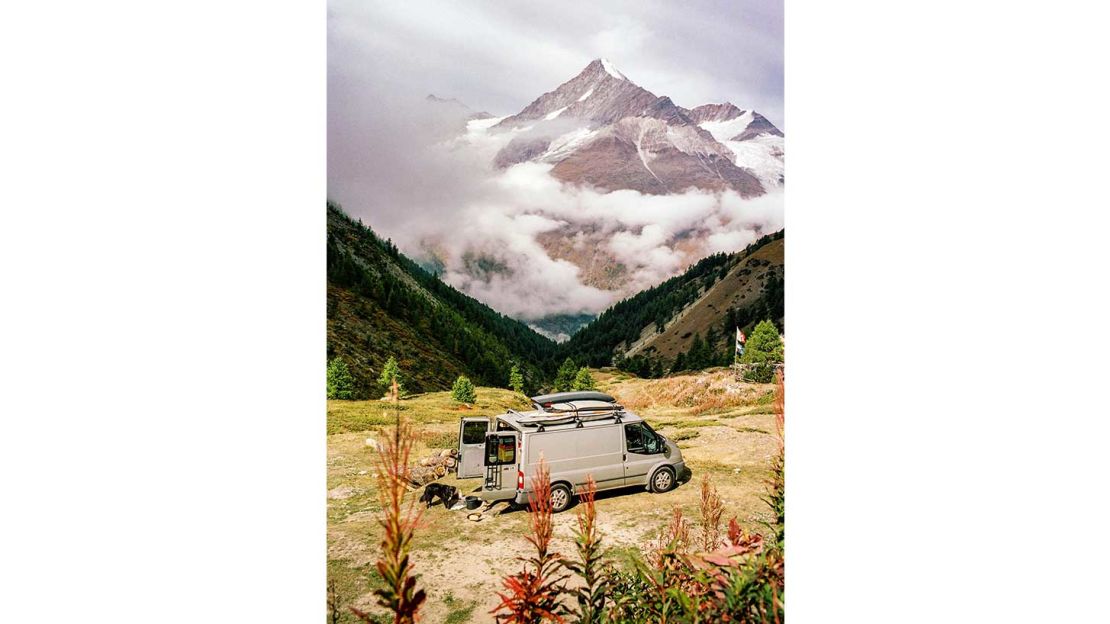
Those living on the road stress that life’s simpler, more sustainable. It’s a rejection of capitalism and material possessions.
“You can’t have a closet full of clothes, you can’t have every piece of gear you want, you’ve got to pick and choose, only have the things you necessarily definitely need,” says Corey Smith.
That doesn’t mean you won’t see the odd bit of spon-con scattered among these feeds, advertizing flasks, for example, or outdoorsy clothing – and, therefore, promoting consumption.
The Van Lifers also admit driving around isn’t necessarily the most eco-friendly pastime.

Still, Creasey points a direct correlation between Van Life and waste management.
“When you’re in a van, you can never really escape it – the amount of plastics after a meal that you have to dispose of, let’s say; they’re there, they’re close to you, they’re in close proximity to you.”
Visiting beautiful natural spots, he says, also prompts you to consider man’s impact on the environment.
Smith agrees – he often ends up parking up on national forest land and will sometimes pick up trash other people have left behind.
“That’s a thing within the van community, to really make sure you’re taking care, you’re stewarding land and stewarding oceans,” he says.
Relationship goals?
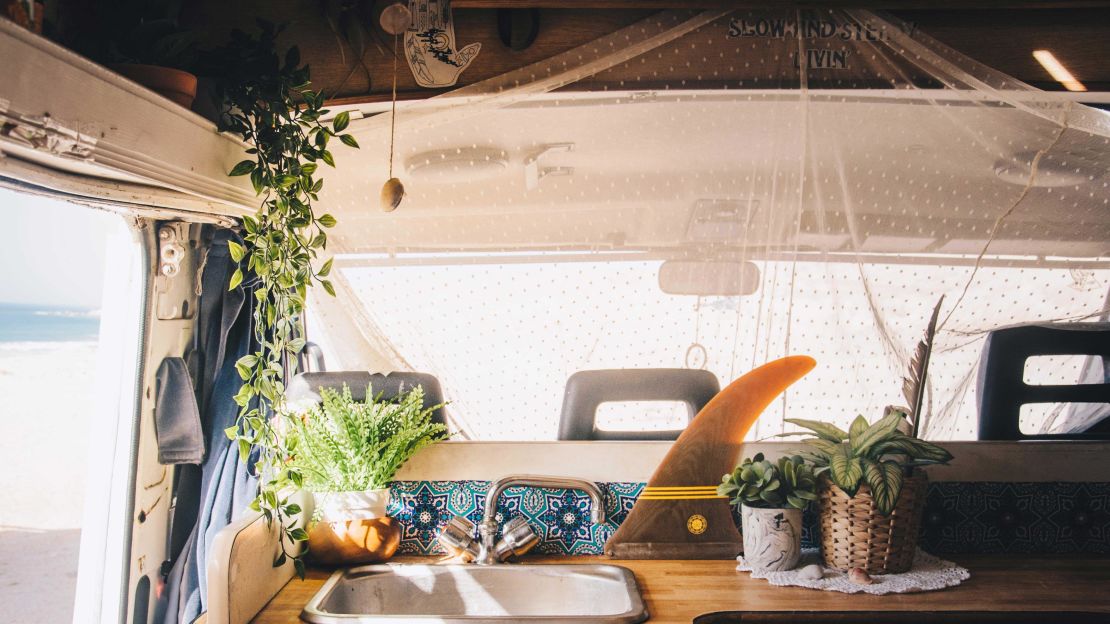
So what should you do if you want to join the Van Life community?
First off, you don’t need a van – at least not according to Smith. He says you should assess your needs and your wants, live more simply, and get outdoors.
“Don’t do it because it’s something that’s cool and prescribed to you on the internet and Instagram,” he says. “Do it because you have a desire to travel and a desire to get out there.”
But is it as simple as that? Scrolling through Instagram, the community seems to be dominated by a very specific type of person.
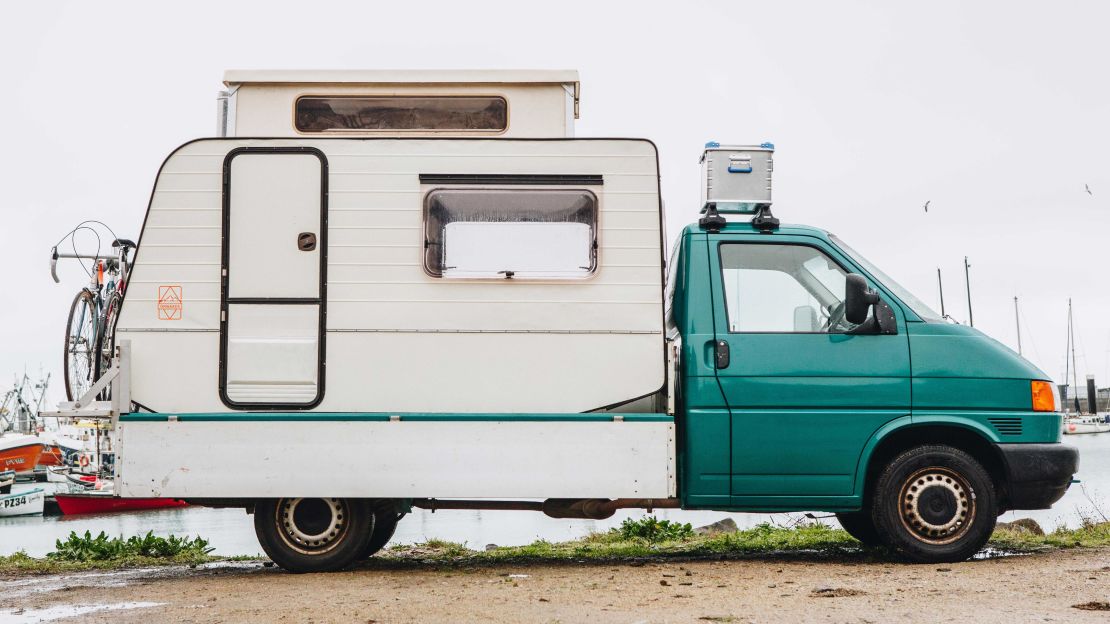
It doesn’t necessarily look particularly inclusive or accepting.
“I get it – Instagram is largely attractive white people in vans,” says Smith.
But, he adds, of course these aren’t the only people embracing the outdoors.
“You definitely don’t need to be a certain race or look a certain way to go out and experience the things you want to experience,” says Smith.
Still, although there are other stories to be found underneath the dominant white, middle class American narrative, there’s still a limit to which just being open to the outdoors will allow you to be part of this world.
You need money, for one.
And do you need a partner?
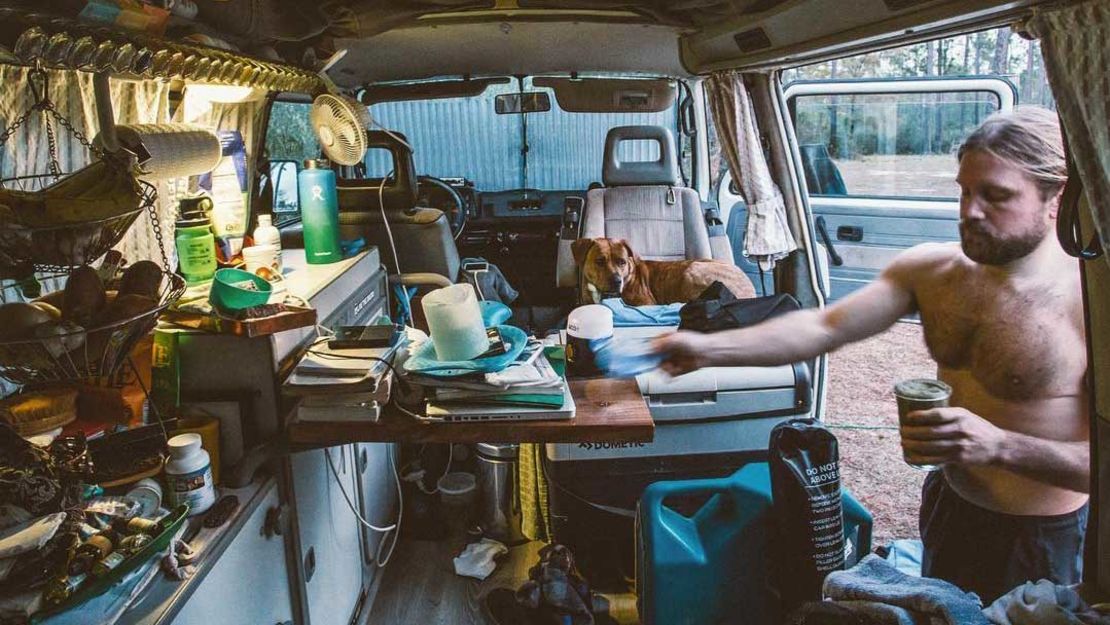
Lisa Jacobs doesn’t think so, but she admits that, at first, she was really conscious of how her life diverged from the prescribed Van Life look.
“I did feel kind of isolated, because everyone that I had followed and everyone that I had talked to on Instagram – they were all these gorgeous couples sharing these wonderful adventures together,” she says.
“And so then, when I didn’t look like that anymore, I didn’t really know who I connected with.”
Post-break up, Jacobs took some time away from the van. She started listening to the Women on the Road podcast and felt the urge to get back on the road.
Now, she loves the experience of traveling solo.
It’s liberating, windows down, cruising through the desert or along an ocean path, living in the present.
She recalls the first day she got back in the van after her relationship ended.
“I just pulled over and stopped and made some food, took in the textures of the sky. I was like: ‘This is my moment, this is what I’m doing. I’m here, right now.’”
Alongside her Instagram, Lisa also blogs about her experience, on topics as diverse as the difficulties of dating on the road or giving practical advice on how to deck out your vehicle.
She tries to share the difficult times, as well as the good stuff. But, like a lot of Instagram influencers, she tends to put the meaty stuff in her captions, so a quick scroll through the grid doesn’t give a lot away.
It was via a long Instagram caption that Emily King and Corey Smith announced the news that shocked the Van Life community: After several years traveling around the world together, they’ve decided to take some time apart.
“When you put two people in 50 square feet, and you tell them that all the interpersonal stuff has to be perfect … it’s pretty challenging,” says Smith.
On Instagram Stories – the more personal, live update part of the platform – the couple had been honest about some of their relationship struggles.
But scrolling through the feed, you’d probably be none the wiser. In the pictures, they always look like a perfect couple, living a perfect life.
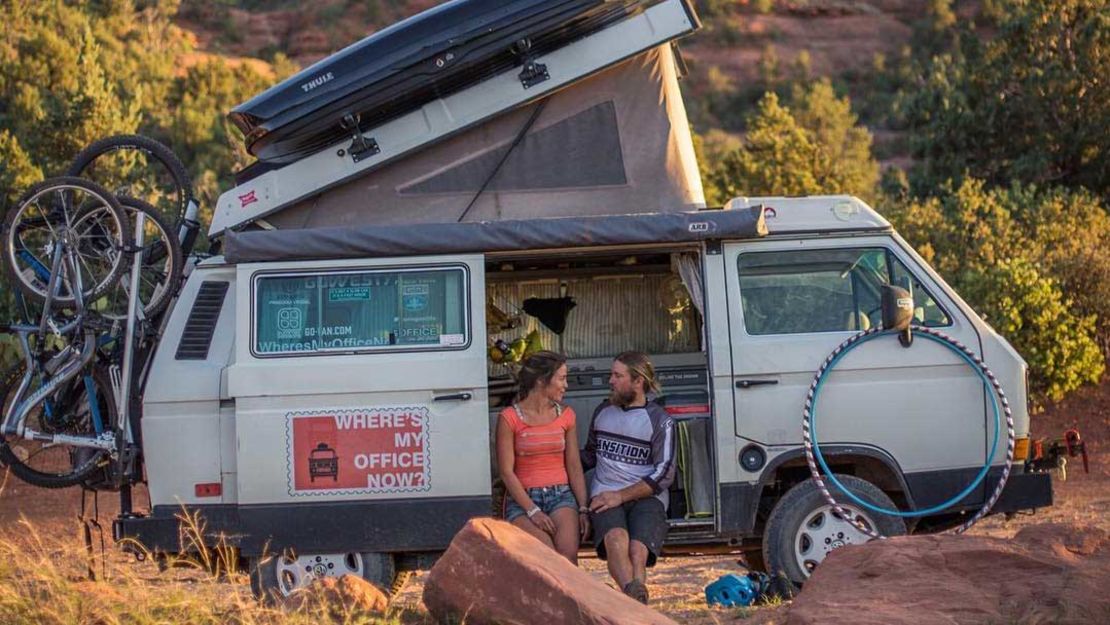
“I think to some degree, a lot of people had built us up as this super couple, or whatever, in their mind. I think that’s what happens a lot on social media, people put you in a box. And they want to you to stay that certain way,” says Smith.
They’re going their separate ways, but keeping up the Instagram account. They think it will help add a bit of realism into this uber-aesthetic corner of the internet.
“Everyone just looks like their life is the best, and there’s no struggles,” says Smith.
“You’ve got to mix the good with the bad, so there’s some sort of reality.”
‘Crescendo of life’
Like Emily King and Corey Smith, Calum Creasey admits Van Life can be tough on a relationship – you share all your good times with your partner in a tiny space, and all the bad times too.
“We’ve definitely tested ourselves,” he says. “I guess the hope is we’re more resilient now, having had those experiences.”
It’s all worth it though, he says. After all, there’s a reason why Van Life is a viral phenomenon.
“Waking up next to the person that you love, in a beautiful place that you feel like is all your own, I guess you could very much be the only human beings on the planet,” says Creasey.
“That’s the crescendo of life for me. It just genuinely does not get any better than that.”
















